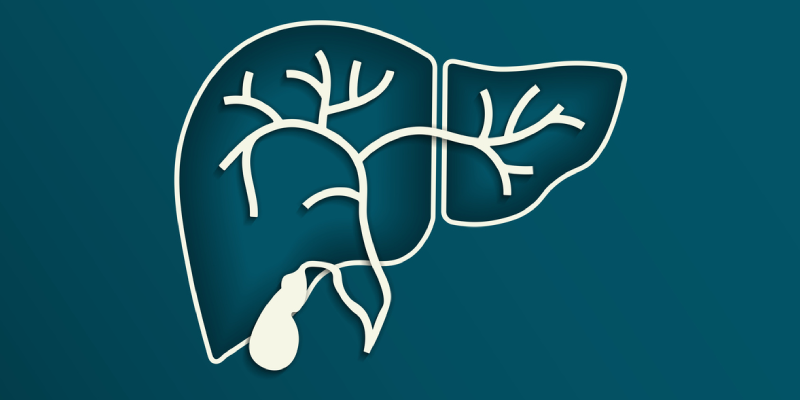Safety Considerations, Prognostic Factors for Patients with HCC Receiving Lenvatinib After IO
By Amit Mahipal, MD, Richard S. Finn, MD - Last Updated: March 19, 2025Continuing their discussion is Amit Mahipal, MD, University Hospitals Seidman Cancer Center, and Richard S. Finn, MD, University of California, Los Angeles, with particular emphasis on the safety consideration as well as prognostic factors for patients with advanced hepatocellular carcinoma receiving lenvatinib after previous immunotherapy.
Dr. Finn: Another aspect we’re exploring in this new era is not just efficacy but also safety. Could you discuss the adverse event profile of lenvatinib in this second-line population based on your study? Did it differ from what we would expect in a frontline population?
Dr. Mahipal: In our retrospective review, the adverse events profile appeared similar to that in the REFLECT trial. Approximately 83% of patients experienced grade 1 or 2 adverse events with lenvatinib, with the most common being fatigue, increased liver function tests, and symptoms such as abdominal pain, diarrhea, and anorexia. Grade 3/4 toxicities were observed in about 39% of patients, with hypertension being the most common. This aligns with the REFLECT trial, and there were no new signals of concern in the adverse event profile.
Moreover, we conducted a review correlating grade 3/4 adverse events with clinical outcomes, a practice more common in the immunotherapy era. Interestingly, we observed a slight increase in progression-free survival (PFS) and overall survival (OS) in patients with higher-grade adverse events. The median PFS was 8.1 months compared to 3.4 months, and OS was approximately 19.5 months versus 11.1 months. While caution is warranted in concluding that higher-grade adverse events ensure better survival, these findings suggest a potential association, possibly indicating that hypertension serves as a biomarker of the drug’s effectiveness.
Dr. Finn: That has been explored in clinical studies, correlating toxicities like proteinuria, hypertension, and, in the case of sorafenib, hand-foot skin reaction with better disease control. Your analysis also delved into patient characteristics that might influence outcomes with lenvatinib in this population. This is crucial, considering the evolving understanding of the natural history of liver cancer, especially in nonalcoholic steatohepatitis (NASH)-related cases. Could you provide insights from your univariate and multivariate analyses?
Dr. Mahipal: We examined various factors, including age, demographics, Child-Pugh status, liver function, and etiology, whether hepatic viral or NASH. Despite known differences in tyrosine kinase inhibitor (TKI) and immunotherapy response between hepatitis B/C and NASH, our study did not find a significant relation between liver disease etiology and outcomes, particularly in OS. However, we did observe that female, white patients with better Child-Pugh status had prolonged survival compared to males or other races with poor liver function. Regarding PFS, BMI and the presence of metastasis emerged as risk factors, while better survival was associated with female gender, white race, and better liver function.
Dr. Finn: The influence of liver function is biologically plausible, and the impact of gender may warrant further exploration in larger studies. Moving on, did your study highlight anything about the duration of prior immunotherapy and its impact on lenvatinib outcomes? This is a critical consideration when deciding treatment sequences in patients who progress quickly on frontline immunotherapy.
Dr. Mahipal: That’s an excellent point. Given the diverse treatment regimens in our study, we couldn’t effectively tease out details on prior response duration. However, we’re conducting a follow-up study with a more homogeneous approach, focusing on atezolizumab/bevacizumab as a first-line option. We aim to analyze how the length of time on prior immunotherapy and the best response predict outcomes in patients receiving TKI afterward. While our current study lacks these specifics, it underscores the importance of considering prior response duration in treatment decisions.
Dr. Finn: Your ongoing study sounds promising and addresses an important clinical dilemma. Congratulations on this valuable study, contributing to the growing body of real-world evidence in the evolving landscape of liver cancer. As our patients continue to fare better, real-world evidence remains crucial until we have prospective data guiding the management of these patients. In closing, how do you personally approach the management of patients progressing on frontline immunotherapy? What is your preferred sequence?
Dr. Mahipal: Managing patients progressing on frontline immunotherapy is indeed challenging. In my practice, atezolizumab/bevacizumab is typically the first-line option, unless there are contraindications for bevacizumab, in which case durvalumab/tremelimumab is considered. For second-line options, TKIs like lenvatinib, and occasionally sorafenib, are commonly employed. Cabozantinib is another option. With the approval of durvalumab/tremelimumab, there’s some consensus to reintroduce immunotherapy, possibly in the second or third line, especially for patients with prolonged disease control on atezolizumab/bevacizumab. However, the outcomes of PD-L1 plus CTLA-4 after progression on some form of immunotherapy are not as favorable.
We’ll continue monitoring, but the significant change is that we now have more options, leading to longer survival and discussions about diverse treatment approaches. This marks a considerable shift in the landscape of hepatocellular carcinoma where, previously, such options and long-term survivors were scarce.
View their previous comments on Real-World Outcomes for Patients with HCC Receiving Lenvatinib After IO.







 © 2025 Mashup Media, LLC, a Formedics Property. All Rights Reserved.
© 2025 Mashup Media, LLC, a Formedics Property. All Rights Reserved.